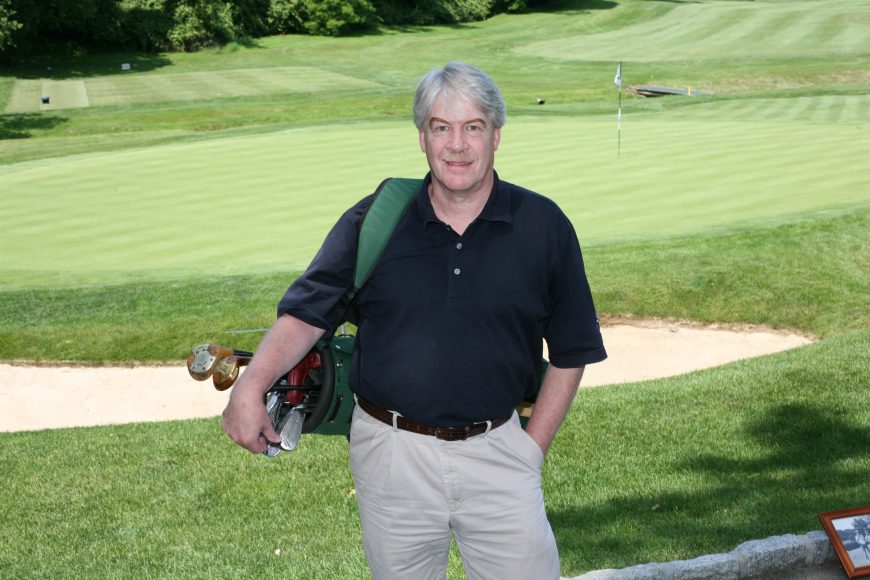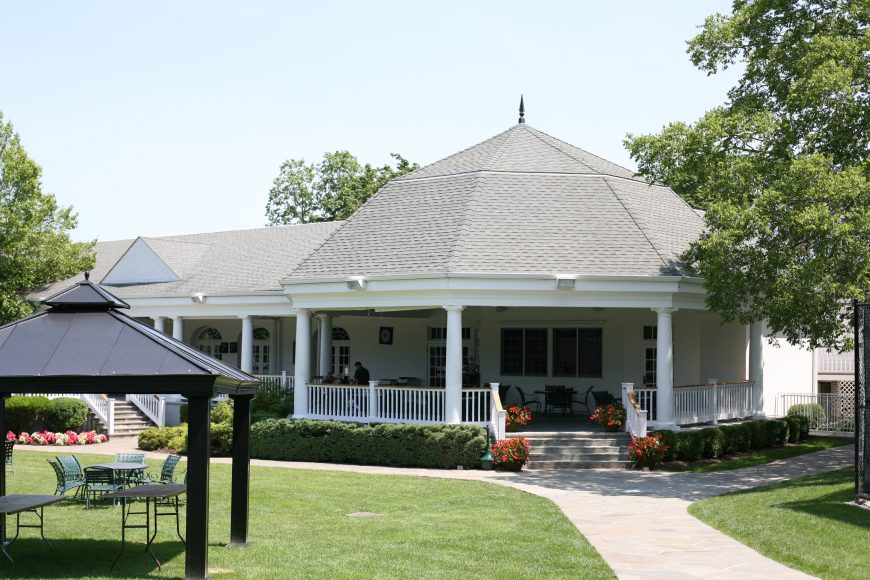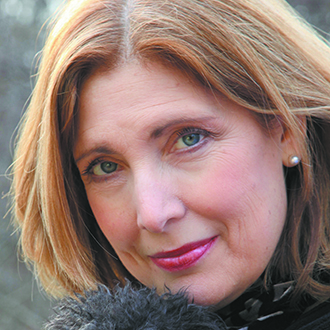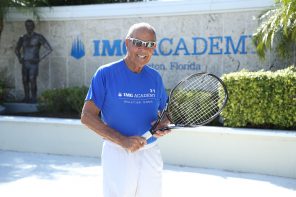British humorist P. G. Wodehouse once said, “To find a man’s true character, play golf with him.” If you are lucky enough to play with Garth Bishop of Hopewell Junction, you will not only learn about him and get his take on the Mount Kisco Country Club’s storied history, but you’ll have a good sense of Bishop’s passion for both the club and the game.
Born and raised in Mount Kisco, Bishop, 59, began caddying at the club at age 12. “I was just there to make money and didn’t play until I was a junior in college,” says Bishop, who rode his bike to the club from his home just up the road on Route 117.
Perhaps observing good golfers wore off on Bishop. One day he picked up a putter and started to swing. “The assistant pro at the time, Kevin Morris, asked me what my handicap was and said, ‘You have a nice swing.’”
Bishop began to play and within a couple of years broke 80 and won the club championship and handicap championship in 1984. “I ended up playing with a lot of people I caddied for,” he says. “I’ve been fortunate enough to play with the first three pros of the club dating back to the first from 1930, William Goldbeck. Bob Johnson, the second pro, took me under his wing and I’ve played with him, Goldbeck, Nick Manolios and the current pro, Chris Case.”
‘“I think most clubs have some sort of history and I know that it’s important for every club to have a book,” says Bishop, who plans to write one about the club. Bob Mogil, a member of the club’s board of governors, is impressed with Bishop’s enthusiasm. “Garth has such a passion for the club and is so genuine. No one else seems to know as much as he does,” says Mogil, who is hopeful for Bishop’s book. “It’s a great story for our members about the history and a great story for the area.”
Bishop affectionately refers to the club as a Westchester “gem” and shared what he knows about its history.
“From the Wampus Indians to the pioneering settlers, to industrialist Moses Taylor V and developer Dudley B. Lawrence, the land on which the present Mount Kisco Country Club clubhouse and golf course exists was once sought after and valued as a place to hunt, live, farm, develop and, presently, a place to play golf.” Bishop writes in “Mount Kisco Country Club: A Westchester Gem With a Storied Past” on NewCastleNOW.org. “This area of New Castle was one of the last settled parts of Westchester.”
Bishop is well-versed on the landowners as well. “The property on which the club is situated was once farmland owned by Moses Taylor V,” he writes, noting that Taylor, a 1893 Yale graduate, was a business magnate with a résumé that included chairman of the board of Lackawanna Steel, director of Bethlehem Steel and railroad official. Taylor created Annandale Farm, a dairy designed to raise and show prized, nationally ranked Guernsey cows, saddle horses, Thoroughbreds and Percheron (a breed of draft horses).
“Annual dog shows were held on the property in the spring, with horse and cattle shows in the fall, attracting spectators from miles around. It was a vibrant setting, with 20 workers or more manning the newly constructed modern barns and cottages, taking good care of the breeding and milking in an effort to accommodate the owner and the marketplace.”
When Taylor passed away in 1928, Lawrence acquired about 1,000 acres, including the 456 acres that belonged to Taylor, for Lawrence Properties of Westchester County.
The Lawrence family of Bronxville (Sarah Lawrence College, Lawrence Hospital, Houlihan Lawrence real estate.) recognized the need for growth north of New York City. They planned to build a 90-acre modern suburban village center they would call Lawrence Farms. The acreage would be divided into substantial estates sheltered from business and heavy traffic. A golf course would also be created. Architect Thomas Winton, an immigrant from a well-known golfing family in Scotland, was hired to design the course and supervise its construction, giving rise to the Lawrence Farms Country Club in 1930.
“Winton touted his creation as unique to the region, a course which incorporated no blind shots to the greens, quite an accomplishment and a difficult challenge to overcome at the time, given the lack of equipment required to move large amounts of land over the naturally hilly terrain of the area,” Bishop writes. “He created a wonderful array of holes over the 163 acres, utilizing the rambling Brook River, a tributary of Kisco River, on six of them. He carved fairways lined with hardwoods and the occasional pine, offering shots to many slightly elevated and well-bunkered greens while still offering the player the option of a run-up shot in lieu of a forced carry. Sixteen of the eighteen holes run north and south, minimizing shots into the rising or setting sun.”
Once the playground of prized cows, dogs and horses, the club became the prized playground of its golfing members.
“Two of the Annandale Farms cottages were connected with a white-washed brick and slate-roofed structure, much in keeping with the architectural style of the farm. It was situated on the top of a plateau, originally overlooking the first and 18th holes,” Bishop writes. “Two of the three large barns remain today, housing state-of-the-art machinery required to maintain the best of golf course conditions throughout the year. A third barn, long since razed, once was the home of the Westchester County Playhouse.”
Summer stock at the playhouse was the stage for many famous and soon-to-be-famous actors and actresses, among them Ethel Barrymore, Ruth Gordon, Tallulah Bankhead, José Ferrer, Margaret Sullavan, Burgess Meredith, Vincent Price and Henry Fonda. The actors stayed at the Lawrence Farms Inn (formerly The Kittle House), under the ownership of the Lawrence family. In 1981, John Crabtree’s family purchased the inn, now Crabtree’s Kittle House restaurant and inn. “There was a memorable incident involving Margaret Sullavan and Henry Fonda,” says Crabtree, who recounts the tale of an “explosive” July 4 when Sullavan doused an argument with her by then ex-husband Fonda, pouring a pitcher of ice water over his head.
Serious economic challenges faced the new club early on. The Great Depression and the onset of World War II were difficult to survive and two other courses in town, the nine- hole Kisco River Country Club and the 18-hole Mount Kisco Golf Club declined in membership and play.
“Members of the adjoining Mount Kisco Golf Club sold the property and the bulk of the membership moved over to its neighbor, the Lawrence Farms Country Club, subsequently renaming it the Mount Kisco Country Club on April 26, 1941,” Bishop writes.
In the 1970s, the Nixon Administration-imposed wage and price freeze affected membership. Bishop wants to interview people who helped save the club at that time. “A campaign for new members was adopted with a big push made for young members to join. I got in at age 23 with a low initiation fee of $1,000. Dues were significantly reduced and increased proportionately until you reached the age of 36.”
Bishop knows where the bodies are buried, too, at least those of the bovine creatures that once roamed the dairy farm on the property owned by Moses Taylor. Three cows and two bulls were interred on the property with headstones that were removed when female members successfully campaigned to have them taken away, because they were near their locker room entrance.
The Mount Kisco Country Club, which has 350 members today, celebrated its 85th anniversary in 2013. Members enjoy full country club activities for the entire family that include golf, tennis, swimming and casual and fine dining as well as an active summer children’s program. The club holds many tournaments, including (with Fairview Country Club in Greenwich) the annual Guiding Eyes for the Blind Golf Classic. The 14 top blind golfers from around the country compete for the Corcoran Cup, with New York Giants’ quarterback Eli Manning serving as host.
A total golf enthusiast, Bishop has been a member of the Golf Collectors Society for 20 years and owns an extensive collection of golf memorabilia, everything from vintage golf balls and antique clubs to a 1920 watercolor map of the Mount Kisco Golf Club designed by A.W. Tillinghast, the premier course designer of his day.
Golf and the Mount Kisco Country Club have shaped Bishop’s life and made him who he is today. “I met quite a cross-section of people. I’ve observed how men and women handle victory and defeat. It was a great experience that carried into my life.”
Bishop reflects on his fascination with golf and Mount Kisco Country Club: “What is most appealing about the club is that I grew up there and learned a lot about life. I know I’m not alone.” And he wants to pay it forward by writing a book. “I have a deep rooted love for the club and what it has done for me. Now I see what I will be able to do for it.”






